Last Updated on May 13, 2014 by Karen
I left off telling you guys about Venice, which was also where we picked up our rental car for the road trip part of our vacation. The car we got was a stick shift, and driving in Italy cannot be more challenging with its unmarked roads, twists and turns, and roundabouts! Despite the car stalls (literally) and the times we got lost (some intended, some weren’t), we made it to every place on our itinerary. Ready?
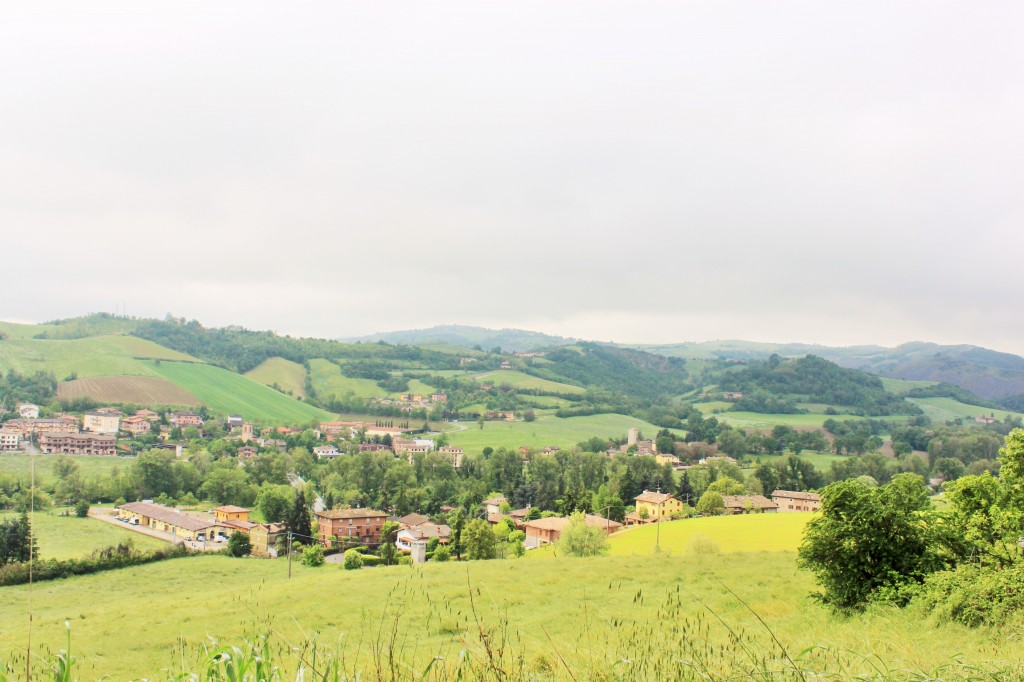 First stop: Bologna! (we made a short stop in Ferrara where we decided there was nothing too exciting to do)
First stop: Bologna! (we made a short stop in Ferrara where we decided there was nothing too exciting to do)
It was a rainy day and it took us forever to find parking. When we finally parked, we were just starving for food. When in Bologna, what do you have to try? Bolognese sauce of course! After looking around for a local restaurant, we found Eataly Bologna. We’ve been fans of Eataly NYC, and if you have never been, you should definitely check out their rooftop bar/beer garden Birreria. It has such a fun vibe in the summer.
Anyway, we both ordered Tagliatelle Bolognese – also called Tagliatelle al ragu by the locals – with our wines and were not disappointed. Flavorful meat sauce over perfectly al dente pasta. I am pretty sure I’ve been overcooking pasta in the past; what I thought was al dente was definitely not so judging by the real al dente pasta dishes we ate on this trip.
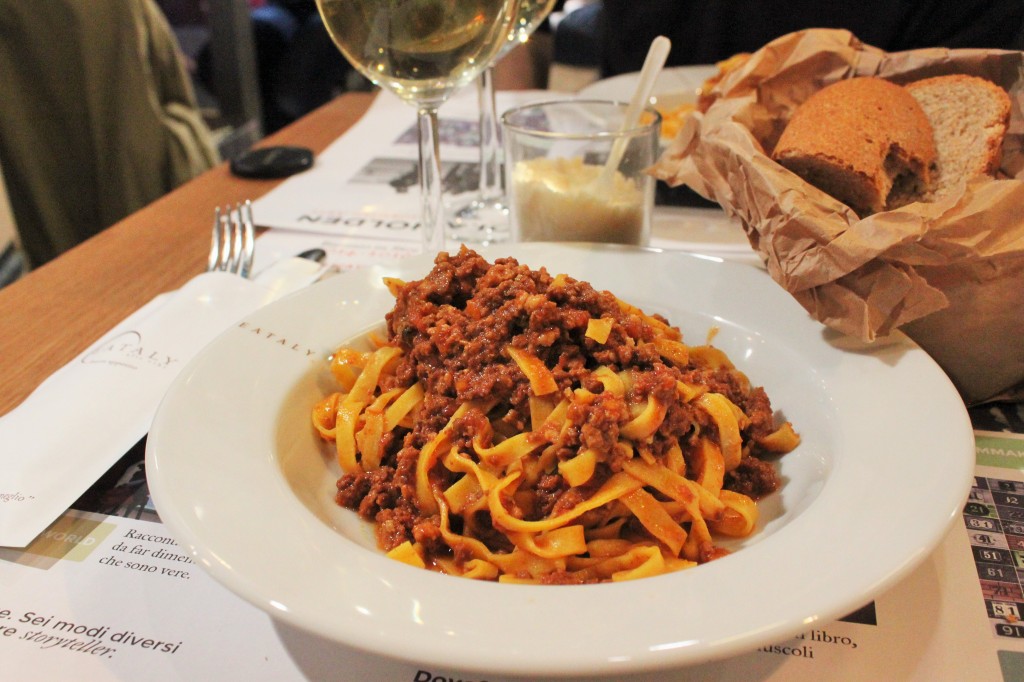 After lunch, we walked around the main square, Piazza Maggiore, and found the two towers of Bologna. The towers of Asinelli and Garisenda were constructed in the Middle Ages, and you can climb 498 steps to the top of one of the towers for a panoramic view of the city. Don’t worry, your eyes are fine. The towers are really leaning.
After lunch, we walked around the main square, Piazza Maggiore, and found the two towers of Bologna. The towers of Asinelli and Garisenda were constructed in the Middle Ages, and you can climb 498 steps to the top of one of the towers for a panoramic view of the city. Don’t worry, your eyes are fine. The towers are really leaning.
The University of Bologna is Europe’s oldest university, founded in 1088, and also the home of one of the oldest anatomical theatre. We walked over to the University of Bologna campus on Via Zamboni and still couldn’t find the theatre. After looking around and asking the students we met, we were told that it was near the main square.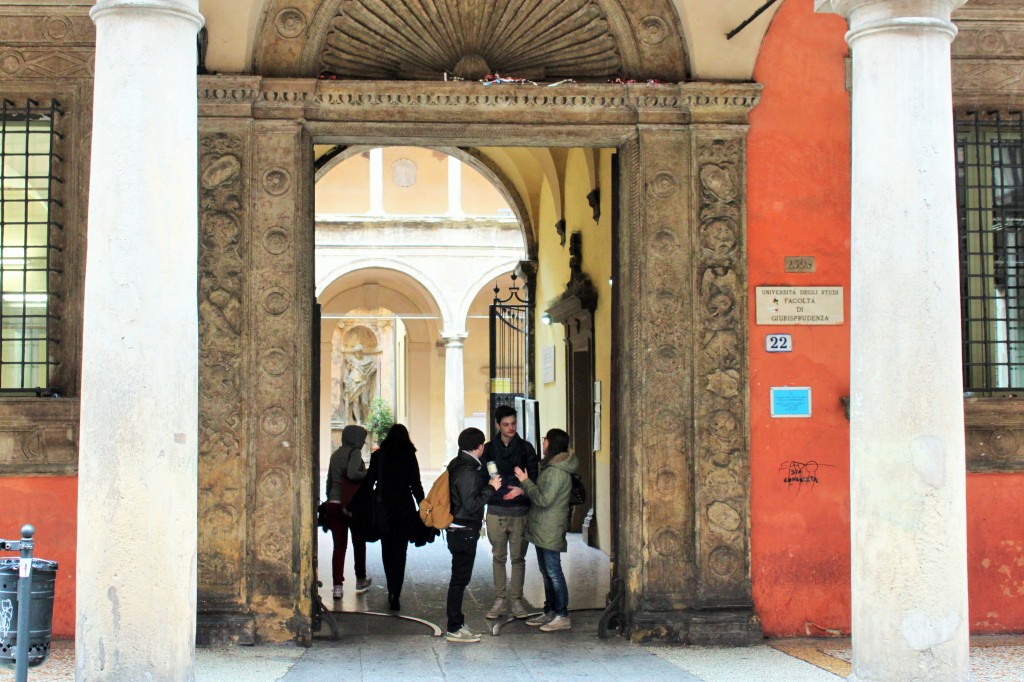
Found it! It was inside the Archiginnasio on the left side of the Piazza Maggiore where we walked right past before.
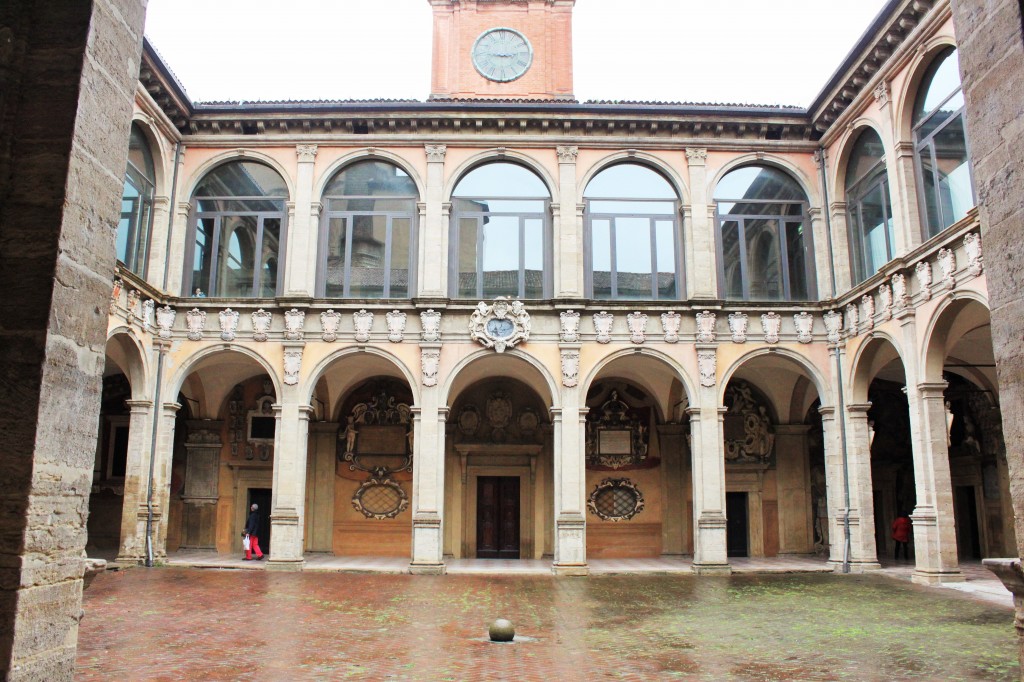 This is the hall where anatomy classes were taught. James was pretty excited to see it. It is beautifully decorated with wood statutes, and in the middle of the room, there is a marble table where dissections were performed.
This is the hall where anatomy classes were taught. James was pretty excited to see it. It is beautifully decorated with wood statutes, and in the middle of the room, there is a marble table where dissections were performed.
After spending the day in Bologna, we were ready to move onto our next stop: Modena!
That evening, after dropping off our bags, we went out looking for dinner options. We planned to go to Trattoria Il Fantino but the restaurant was closed that day (it happened a lot on this trip, I’m still not sure why), so we walked further down that street and found Osteria Romana, a restaurant featuring Roman cuisine.
You say, Roman cuisine in Modena? It was actually a great choice! We both agreed that the Penne Carbonara and Bucatini all’Amatriciana were one of the best pasta dishes we’ve had. The owner, who grew up in Rome, explained to us that they use guanciale instead of pancetta in their pasta dishes. Guanciale is cured pork cheek, and if you’ve tried it before, it is just as flavorful as pancetta but less greasy. You know a carbonara sauce is done perfectly when you finish the pasta, there is no excess oil pooling on the bottom of your plate.
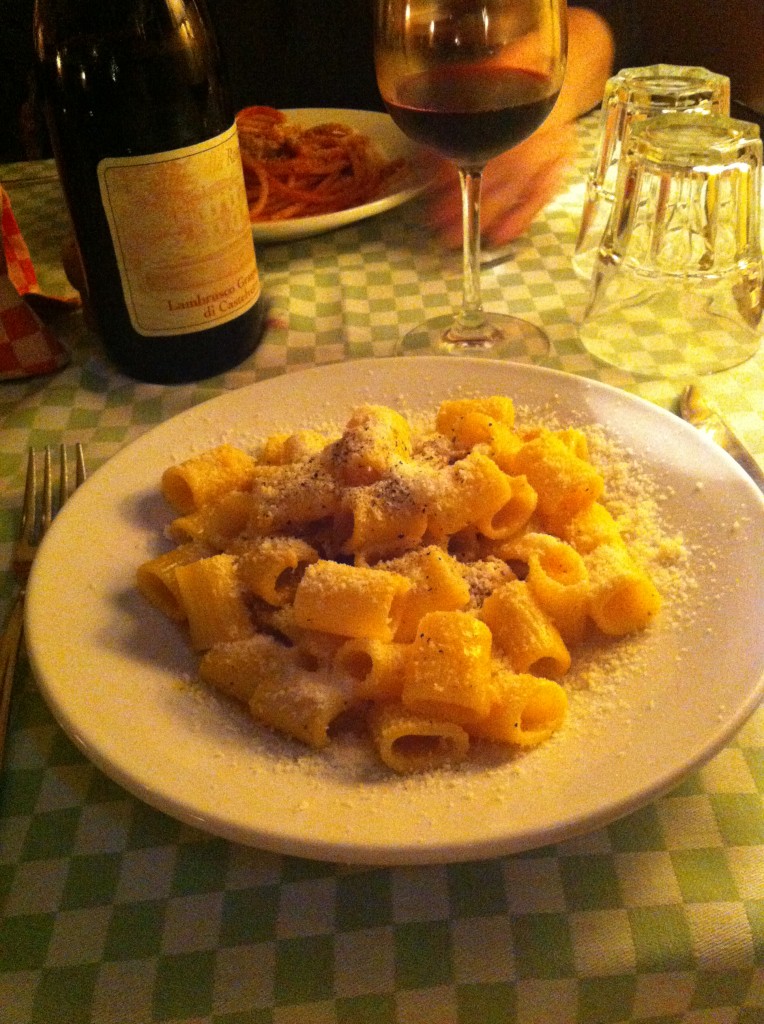
By the way, did you know that the Italians have a word for mopping your plate clean with a piece of bread? They call it “scarpetta” — I love it!
We’ve been wanting to try Lambrusco, a sparkling red wine from the region, and the owner introduced us to Lambrusco Grasparossa di Castelvetro. I’ve never been a fan of dry red wine but this Lambrusco, very high in tannin, was just delicious. The bubbles also make it really enjoyable to drink. And it was a great pairing for the rich pasta dishes we had.
The next day, we started our day early and drove to a cheese factory about twenty minutes away from Modena to meet with our guide Caterina. When we got there the cheesemakers were already stirring up big vats of milk. Caterina explained that calf rennet and starter whey left from the previous batch were already added to the mixture of whole and skim milk.
The milk started to coagulate into curds, which were stirred with a huge whisk and broken into small pieces. A steamer was attached to the side of the copper vat to heat the mixture and to encourage coagulation.
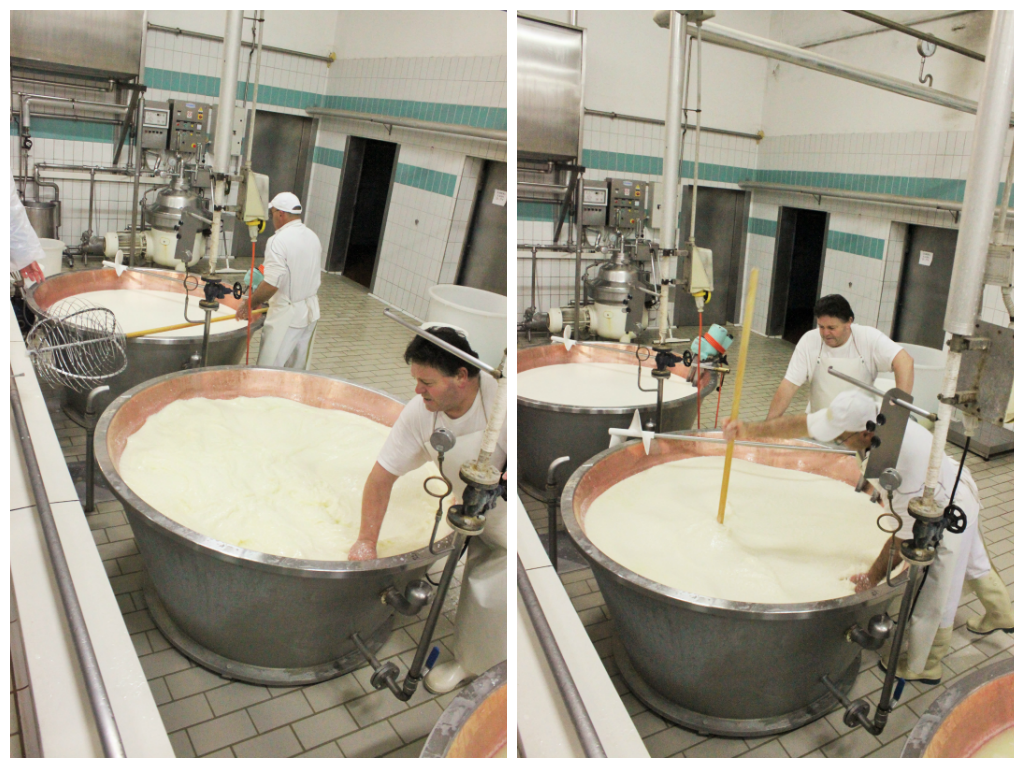 After cooking, the mixture was allowed to rest in order for the curds to settle on the bottom into a big ball of curd.
After cooking, the mixture was allowed to rest in order for the curds to settle on the bottom into a big ball of curd.
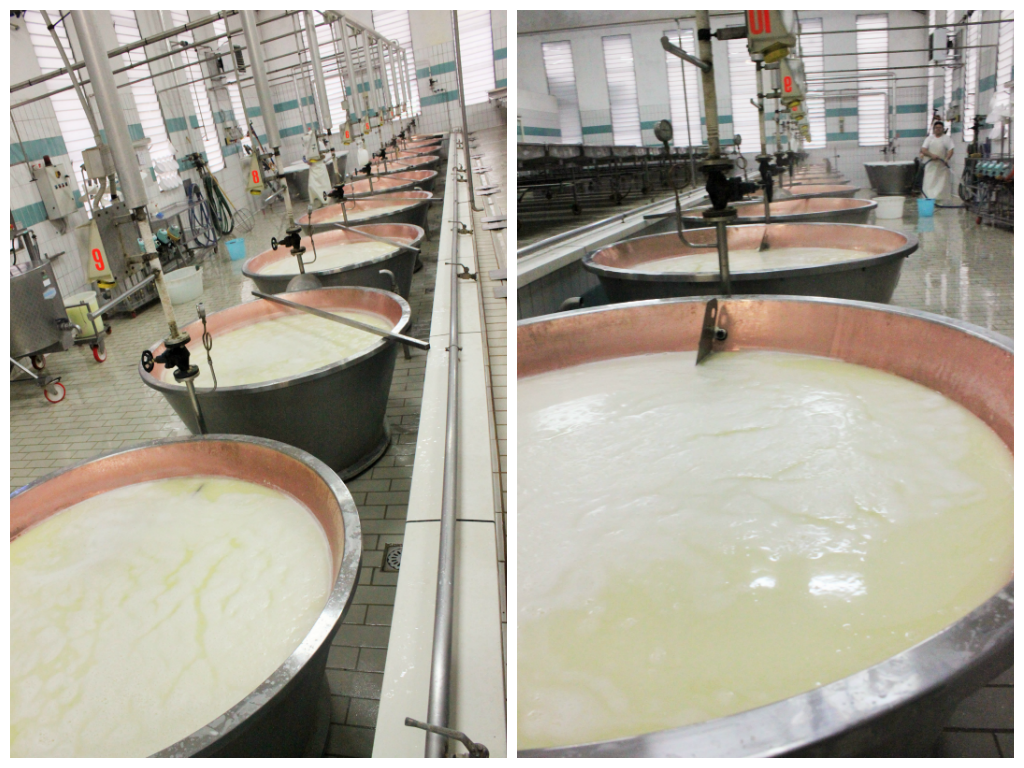 Then the cheesemaker would check for the right consistency before collecting all of it into a cheesecloth. There was about 1000L, or 264 gallons, of milk in the vat. Guess how many wheels of Parmegiano-Reggiano that makes?
Then the cheesemaker would check for the right consistency before collecting all of it into a cheesecloth. There was about 1000L, or 264 gallons, of milk in the vat. Guess how many wheels of Parmegiano-Reggiano that makes?
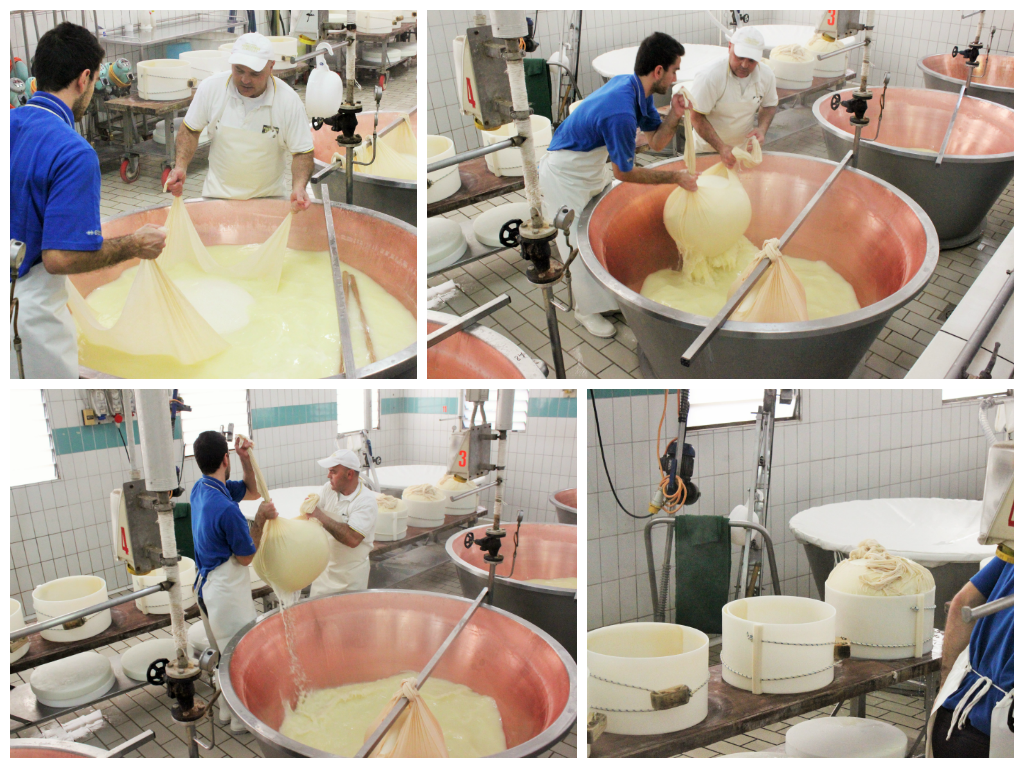 TWO. Just two. No wonder the resulting cheese tastes so rich! So the ball of curd is cut into two and then fitted into the round molds.
TWO. Just two. No wonder the resulting cheese tastes so rich! So the ball of curd is cut into two and then fitted into the round molds.
Once they shrink down a bit, a plastic belt imprinted with relevant information about the cheese (such as when it is made, the factory’s identification number) is fitted in between the mold and wheel of cheese. The wheel gets buckled up and takes on the lettering in about a day. It is like a birth certificate tattooed on the cheese!
The wheels are placed in a saltwater brine for about 20 days. The sea salt is used to flavor the cheese and act as a natural preservative (no chemical preservative is added in the whole process).
After the brine bath, the cheese wheels are transported to the maturation room. There were hundreds if not thousands of wheels on the wooden shelves! When I walked in there, the smell was so powerful that my mouth just started watering!
The aging process continues here for at least 12 months. Some are aged up to 36 months. They all get rotated periodically to ensure equal distribution of weight and flavors.
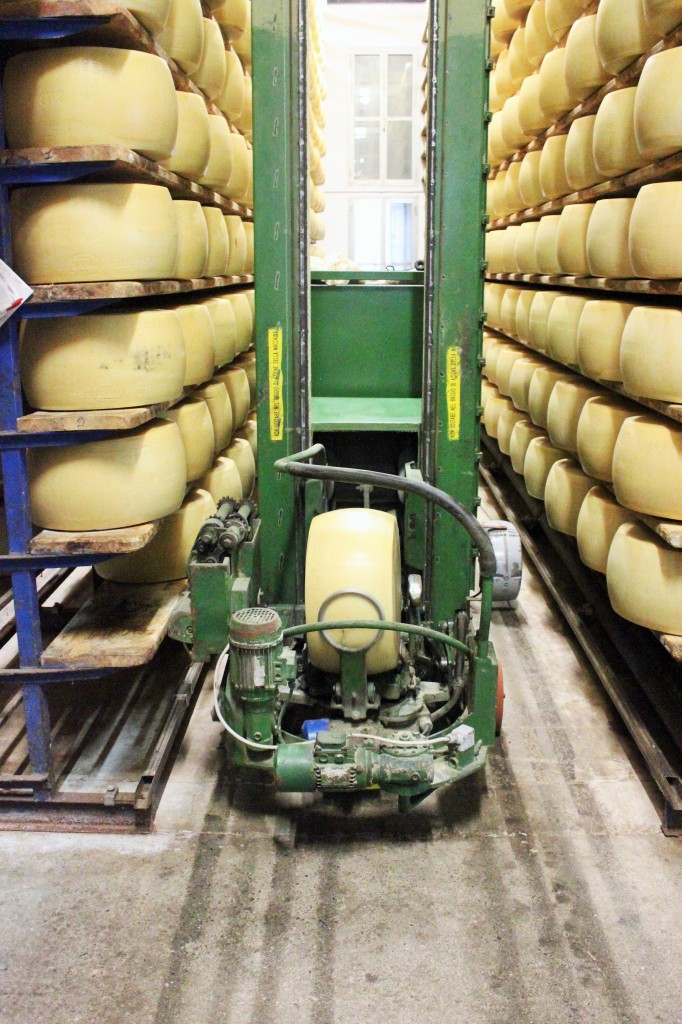
In order to receive the Protected Designation of Origin, or DOP, the cheese must be made only in the Emilia-Romagna region of northern Italy. There are other guidelines, for example, the dairy has to be in the region, and the cattle feeds have to be from the region as well. The experts from the Consortium inspect each cheese wheel to make sure that there are no flaws, like molds or dents. They also tap it with a small metal hammer, listen for the sound, and determine whether there are holes inside which could cause bacterial growth.
After they determine the cheese is a real deal, it gets branded with an official seal.
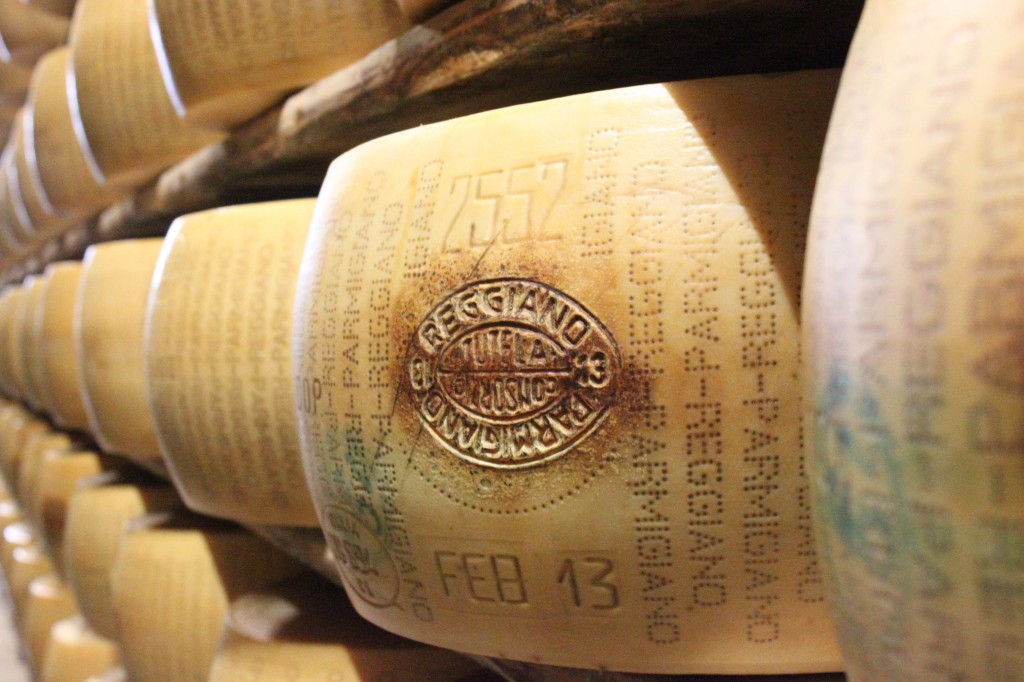 The cheeses that do not pass the test are marked with strikethrough lines. They are still good cheeses, but just second tier and not top quality.
The cheeses that do not pass the test are marked with strikethrough lines. They are still good cheeses, but just second tier and not top quality.
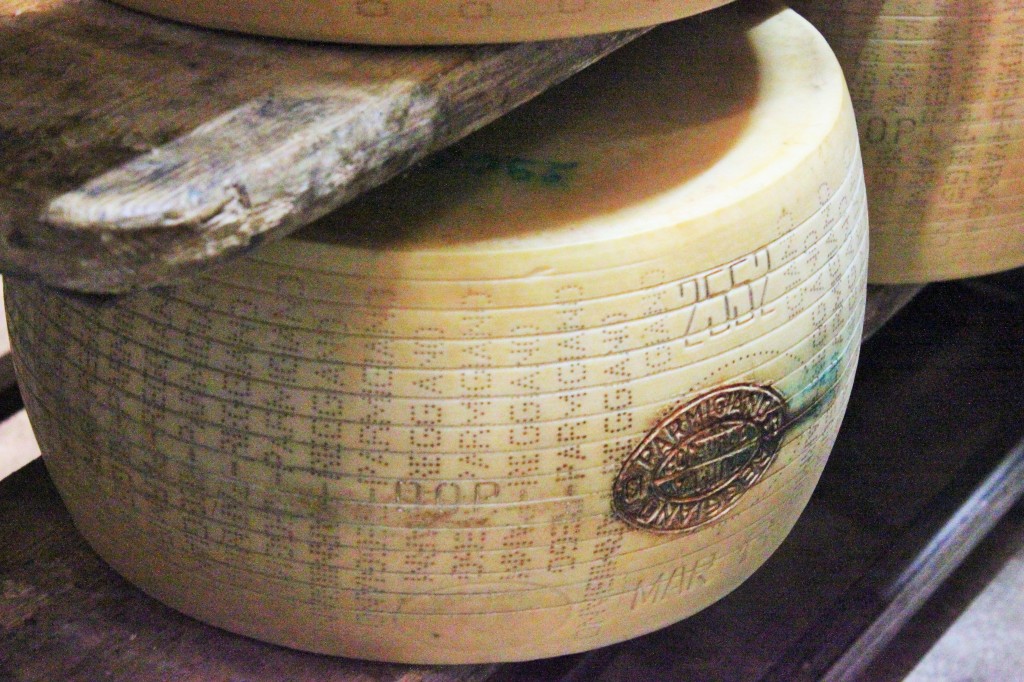 Then there are cheeses that don’t even make the lower grade. The imprinted words are completely scratched out, and sometimes, they are sold to other cheesemakers to be added as a flavoring to melting cheeses, like Fontina.
Then there are cheeses that don’t even make the lower grade. The imprinted words are completely scratched out, and sometimes, they are sold to other cheesemakers to be added as a flavoring to melting cheeses, like Fontina.
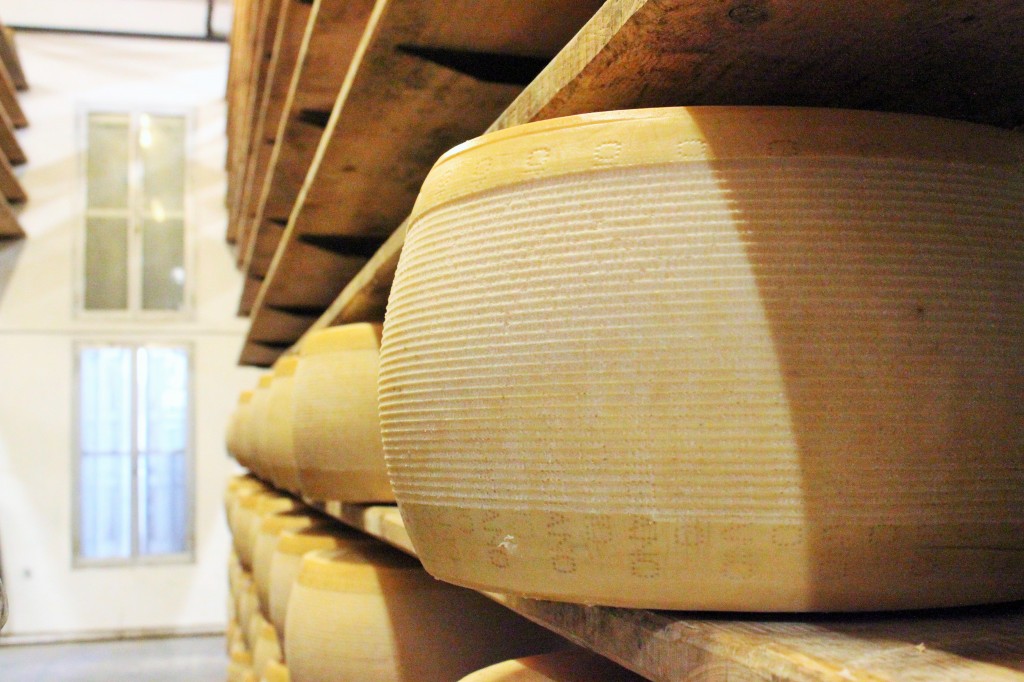 At the end of our tour, we had a tasting of the different aged cheeses (sorry no pictures – the designated photographer was busy eating!) The Parmegiano-Reggiano that has been aged for 12 months has a nutty flavor with a granular texture. The one that has been aged for 25 months has even more complex flavors, with a sweetness that lingers in your mouth, and more of that grainy texture too. The granules are good stuff.
At the end of our tour, we had a tasting of the different aged cheeses (sorry no pictures – the designated photographer was busy eating!) The Parmegiano-Reggiano that has been aged for 12 months has a nutty flavor with a granular texture. The one that has been aged for 25 months has even more complex flavors, with a sweetness that lingers in your mouth, and more of that grainy texture too. The granules are good stuff.
I have been wanting to do this tour for two years (looking back at my first emails to the Consortium back in 2012) and even though it has taken a lot of planning to make it happen, I highly recommend it if you’re going to be in the Emilia Romagna region. It was an educational experience and it made us realize how much work, time, and care go into the making of a wheel of cheese!
Coming up in the next post, more on Modena and Parma!
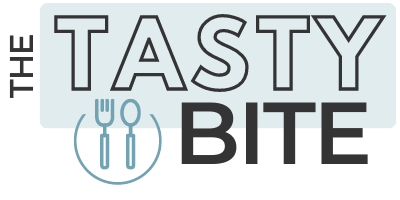
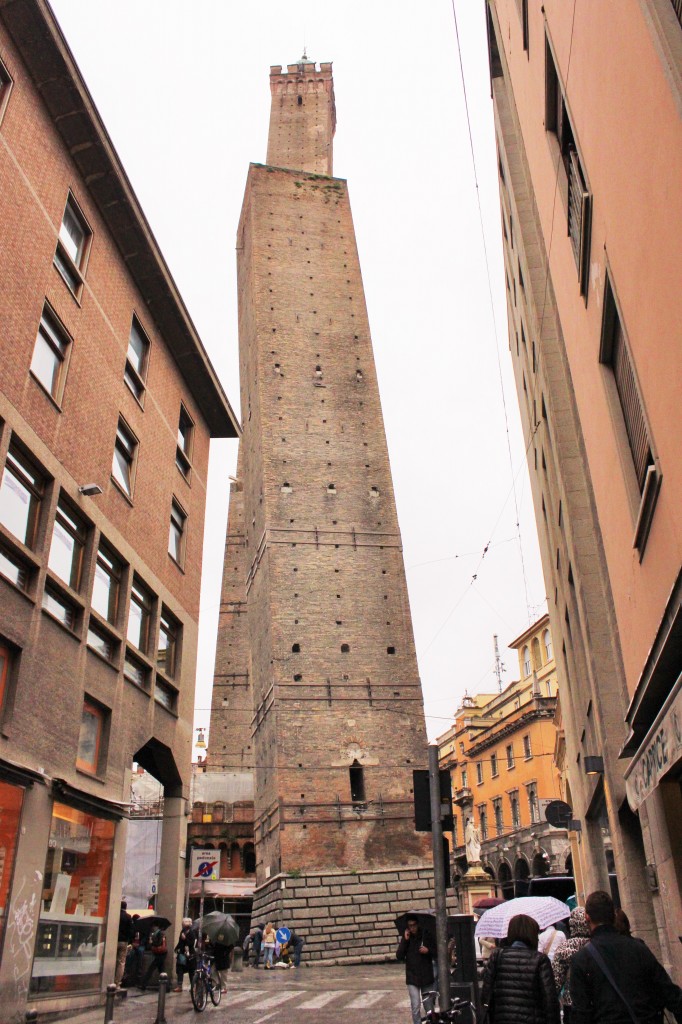
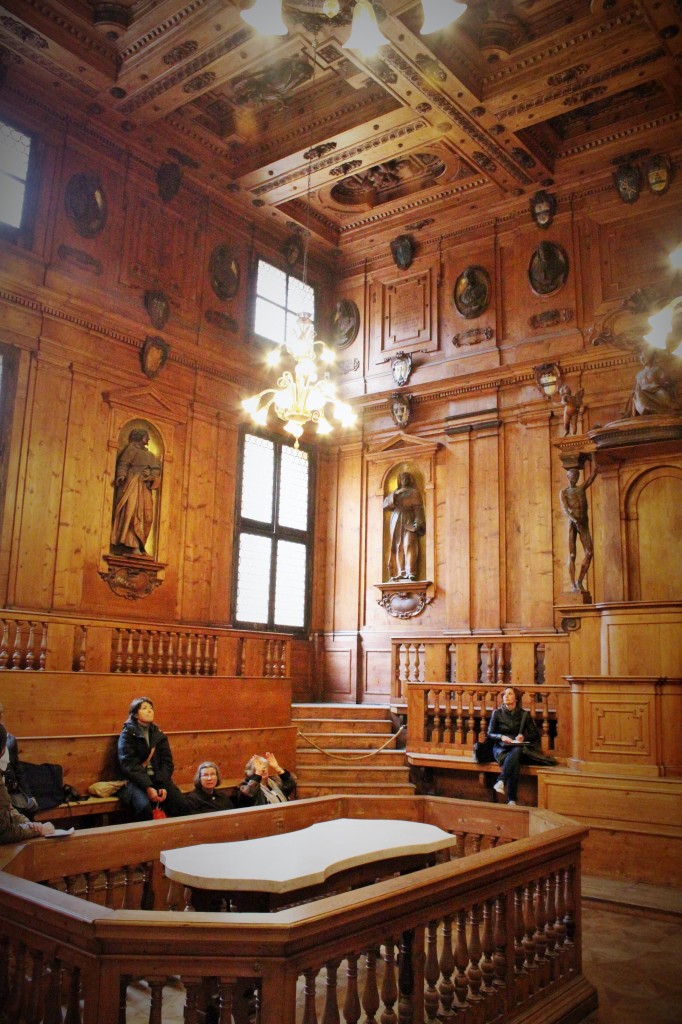
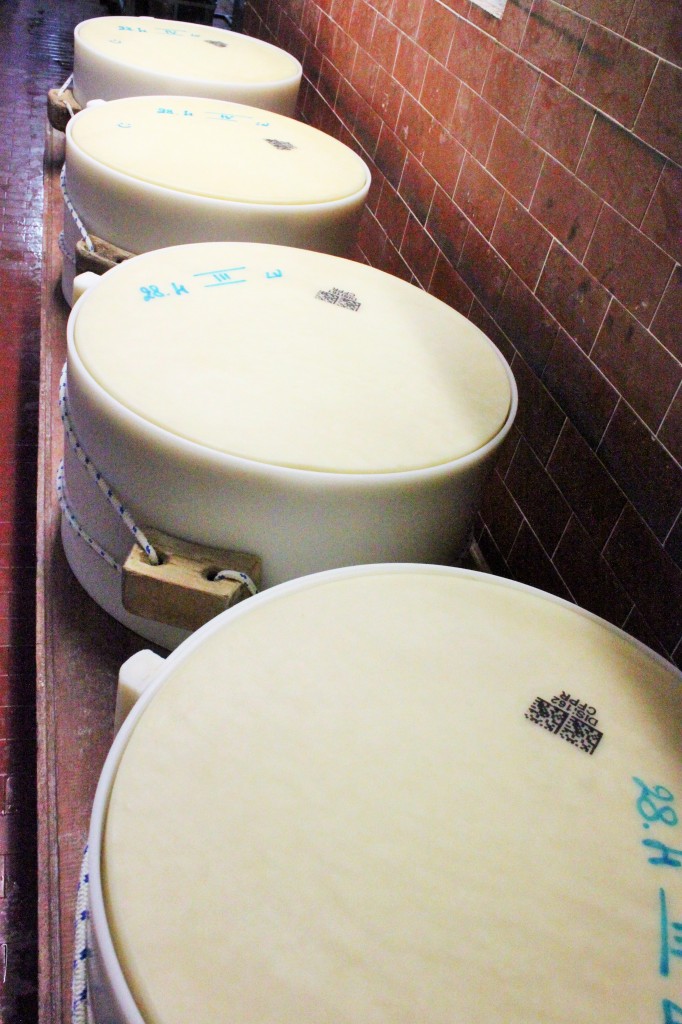
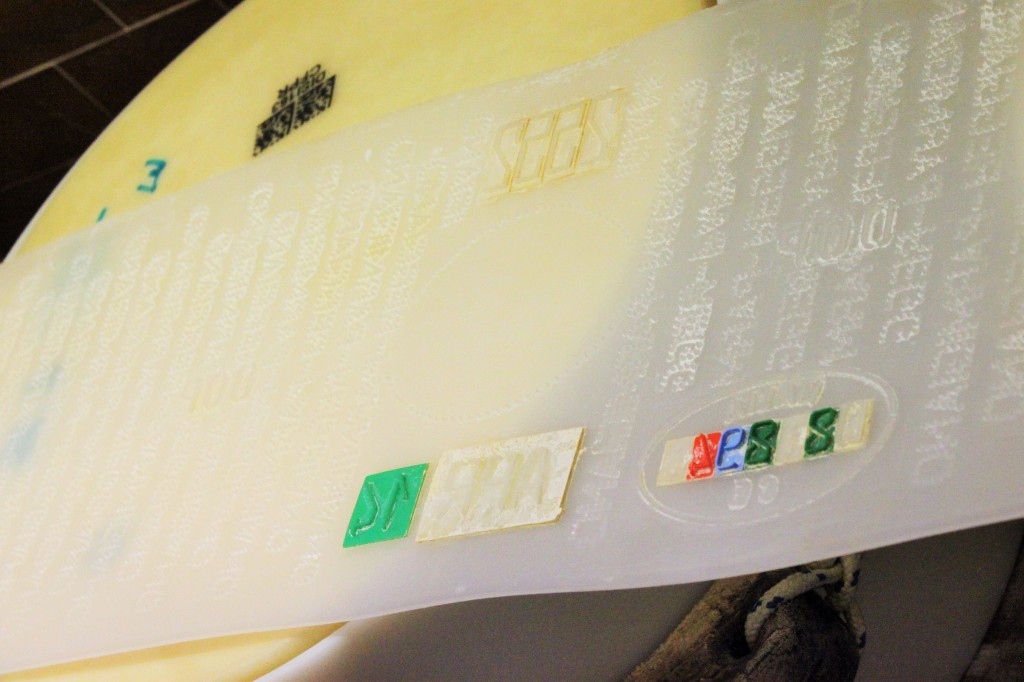
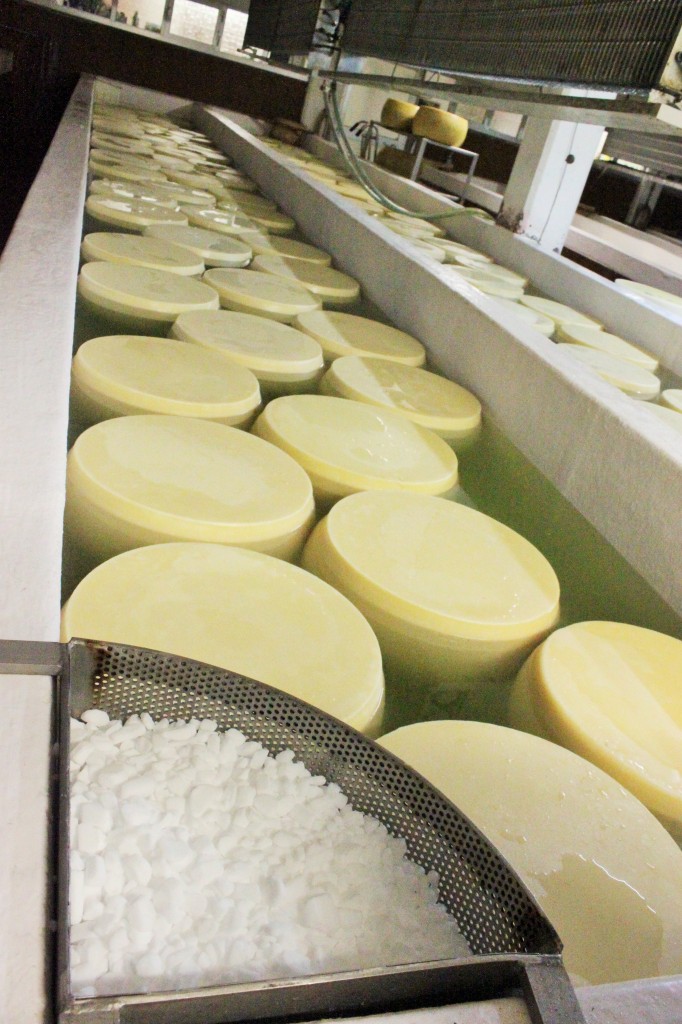
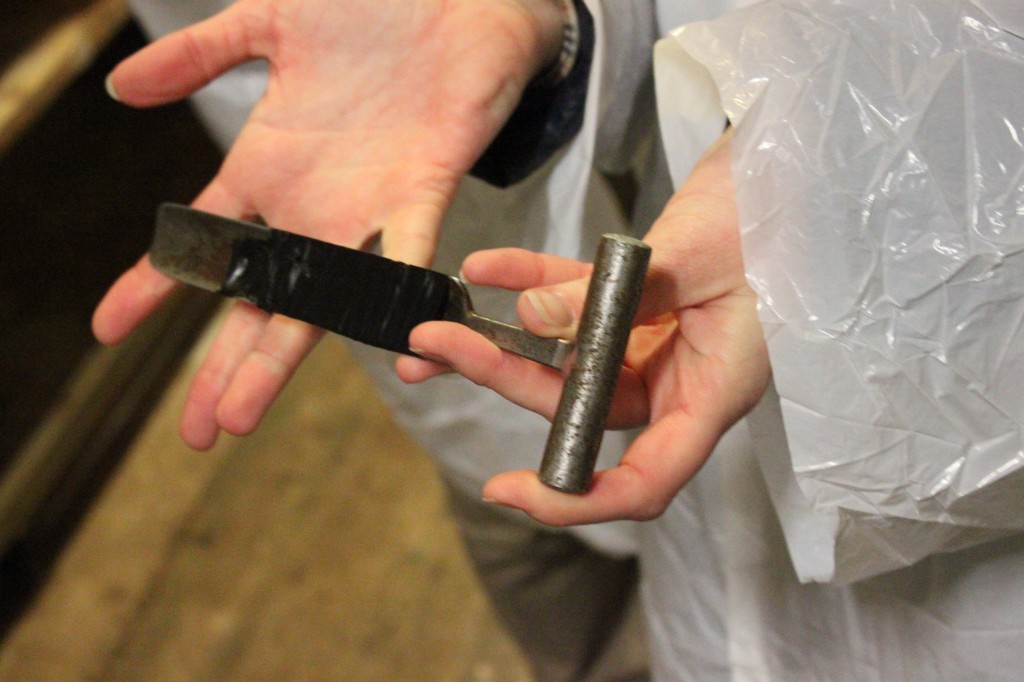
![[Travel Report] More on Modena, Parma, and a Memorable Meal at Osteria Francescana](https://www.thetastybiteblog.com/wp-content/uploads/2014/05/IMG_1198-150x150.jpg)
![[Travel Report] Venice, Italy](https://www.thetastybiteblog.com/wp-content/uploads/2014/05/IMG_1001-150x150.jpg)

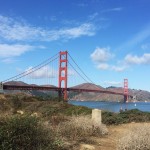
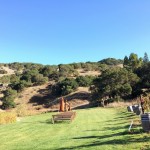










The first photo up there looks unreal! I’d love to go to Italy one day and do the cheese tour. I doubt my husband would do that with me tho :-p
Pingback: [Travel Report] More on Modena, Parma, and a Memorable Meal at Osteria Francescana